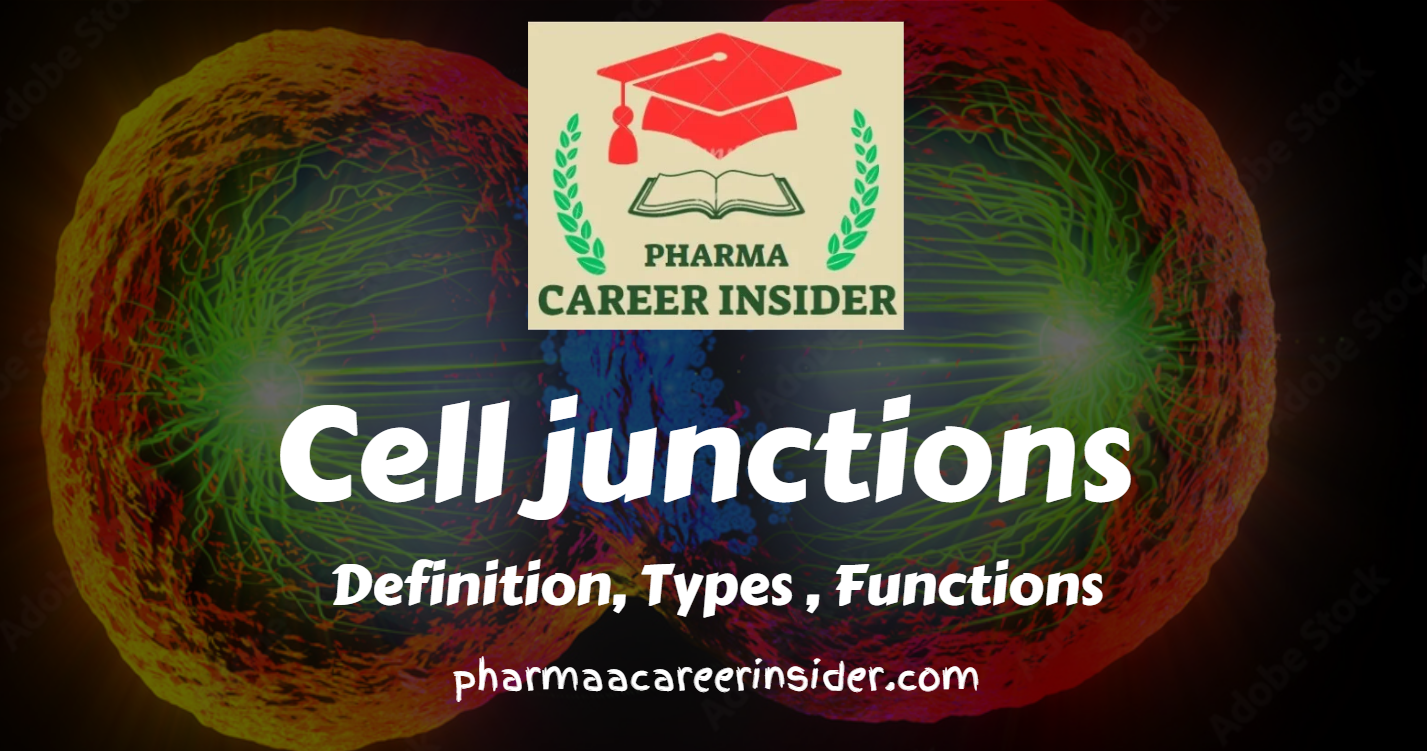Cell junctions are specialized structures in the cell membrane that facilitate communication, adhesion, and coordination between adjacent cells in multicellular organisms. These junctions are crucial in maintaining tissue integrity, allowing cells to work together, and ensuring the proper functioning of various organs and tissues. There are several cell junctions, each with specific functions and structures.
1. Tight Junctions:
Structure: Tight junctions are formed by the fusion of adjacent cell membranes, creating a barrier that seals the intercellular space. These junctions are composed of proteins like claudins and occludins.
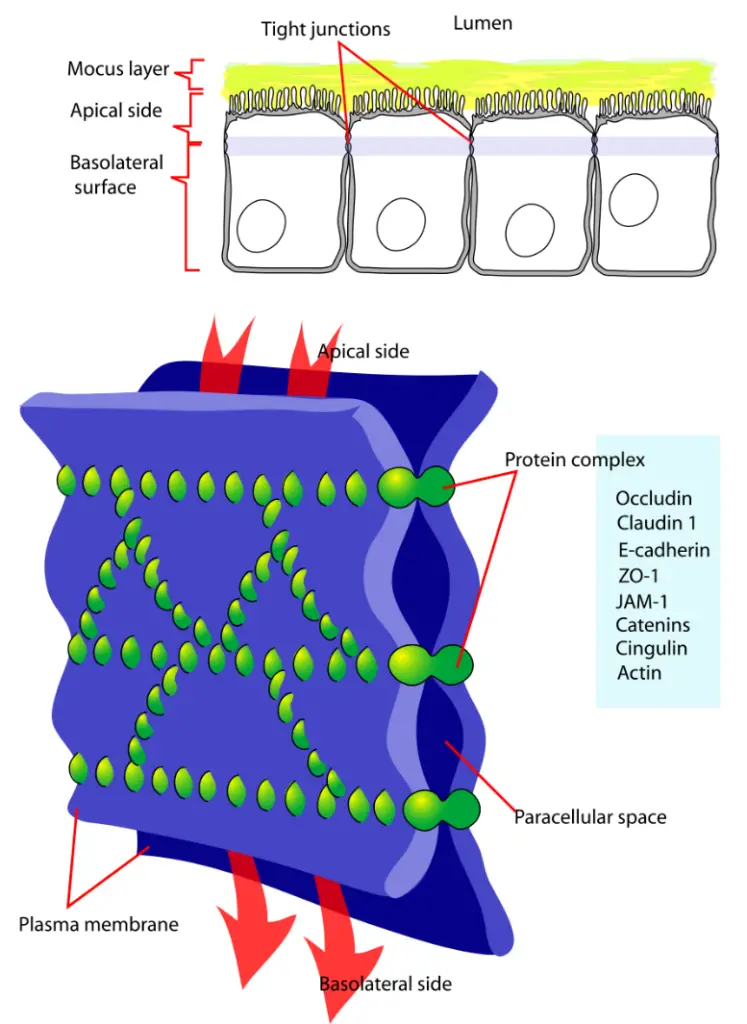
Function: Tight junctions form a barrier that actively prevents the leakage of molecules and ions between cells. Tissues requiring a high degree of impermeability, like the lining of the digestive tract and the blood-brain barrier, contain these junctions.
2. Adherens Junctions:
Structure: Adherens junctions contain proteins called cadherins that link adjacent cells. Cadherins are connected to the actin cytoskeleton inside the cell.
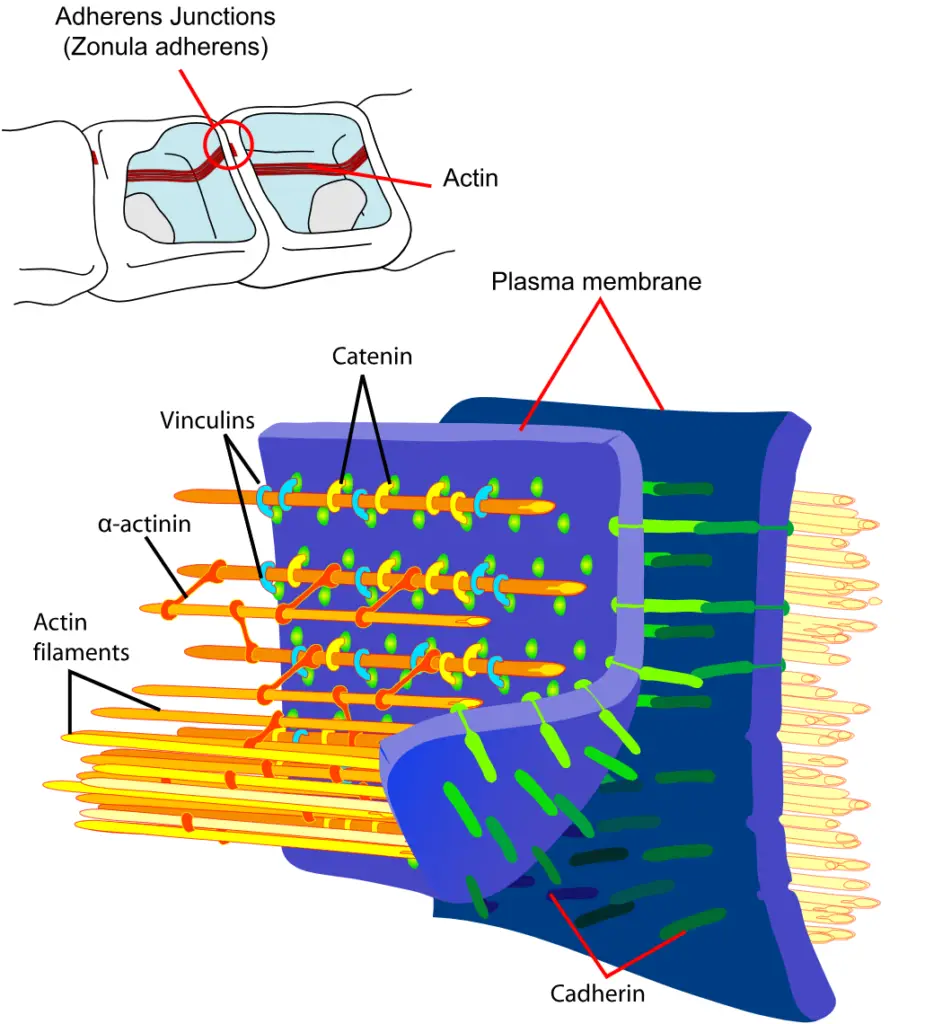
Function: Adherens junctions provide mechanical stability and help cells adhere to each other. They are particularly important in tissues of mechanical stress, such as the skin and heart muscles.
3. Desmosomes:
Structure: Desmosomes are similar to adherens junctions but have different cadherins (desmogleins and desmocollins) and link to intermediate filaments instead of actin filaments.
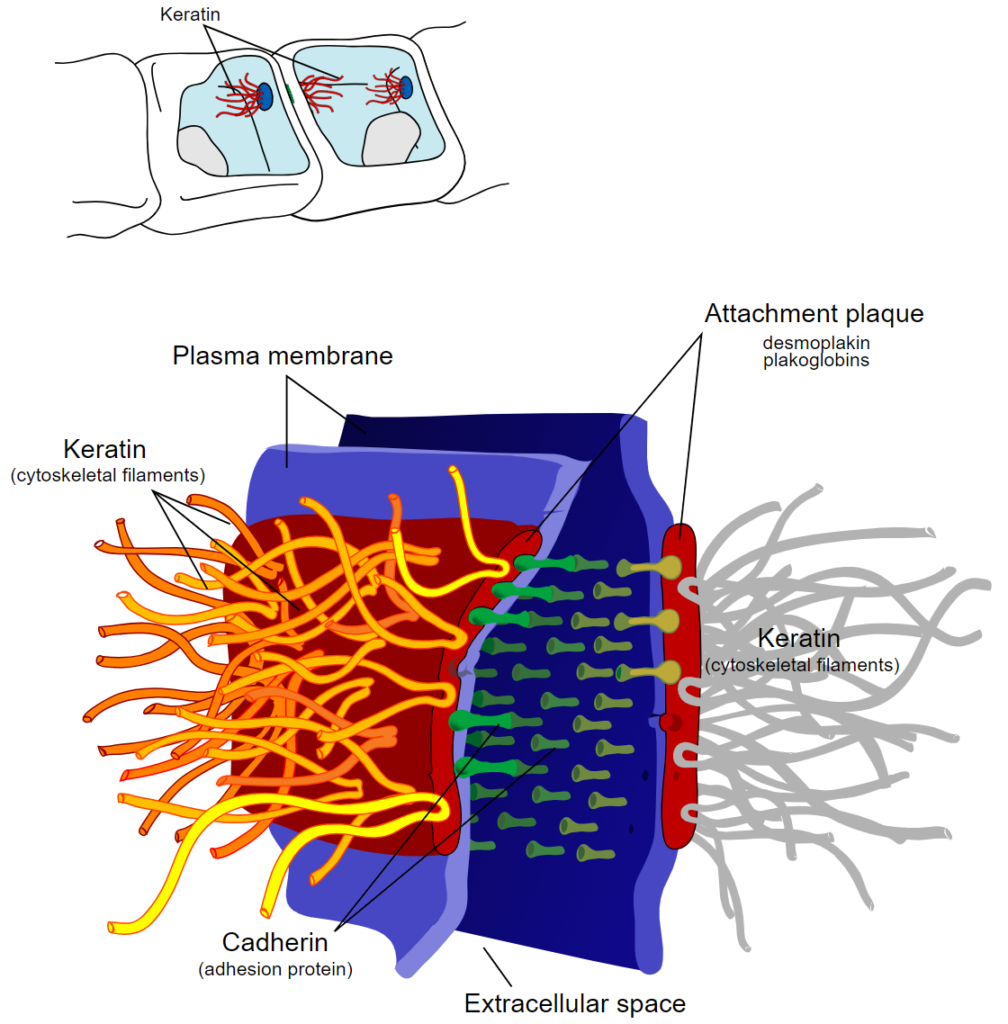
Function: Desmosomes strengthen cell-cell adhesion and distribute mechanical stress across tissues. They are prominent in tissues that undergo stretching or mechanical strain, like the epidermis (skin) and cardiac muscle.
4. Gap Junctions:
Structure: Gap junctions consist of protein channels called connexons that span the cell membrane of adjacent cells. Connexons align to form a direct channel between cells.
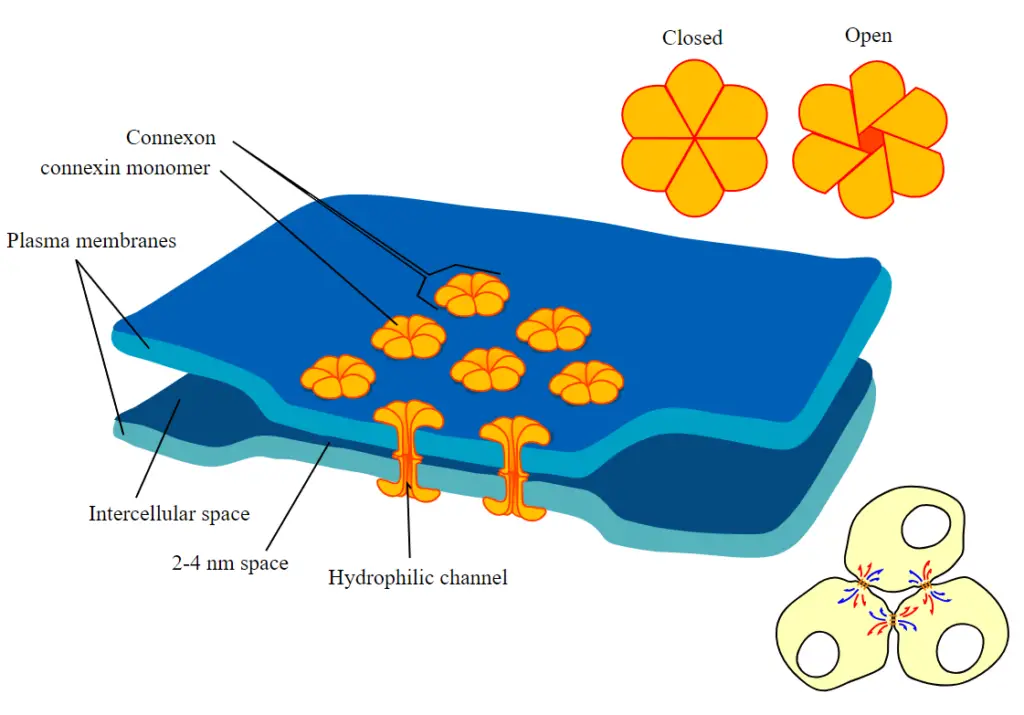
Function: Gap junctions allow the direct exchange of ions, small molecules, and electrical signals between cells. They are critical in coordinating activities in excitable tissues like the heart and nervous system.
5. Hemidesmosomes:
Structure: Hemidesmosomes are similar to desmosomes but anchor cells to the extracellular matrix (ECM) via integrin proteins instead of linking cells to each other.
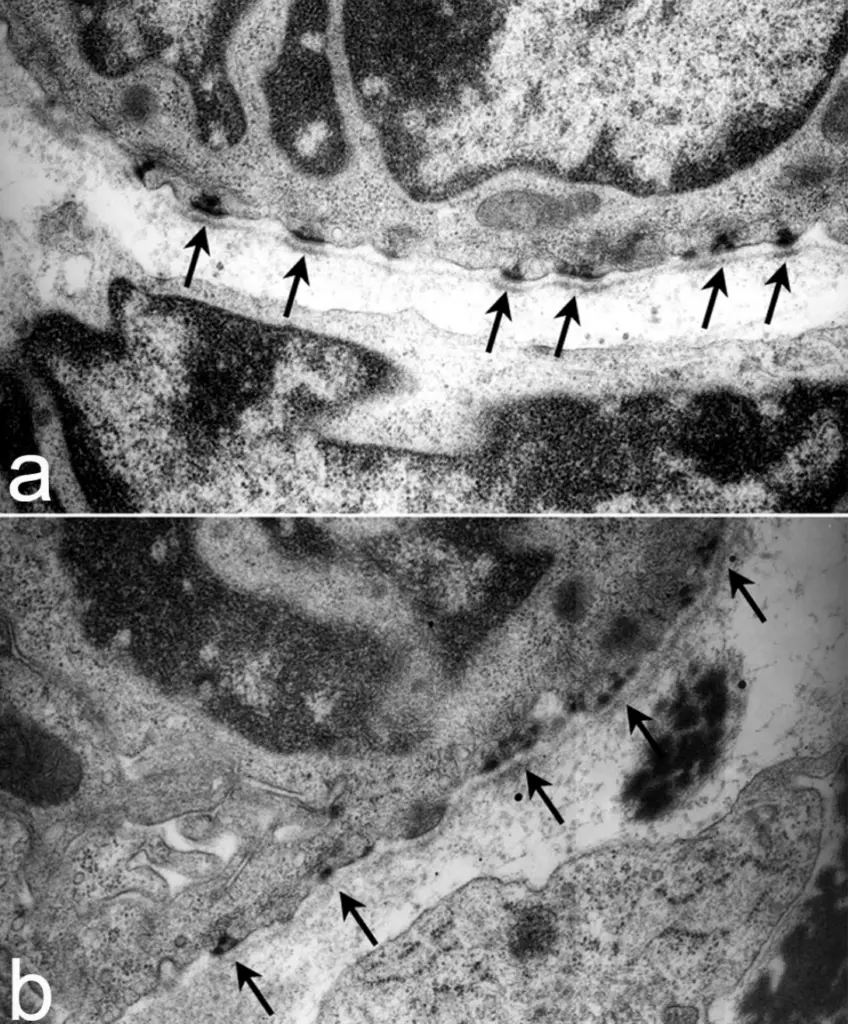
Function: Hemidesmosomes stabilize tissue by anchoring cells to the ECM, especially in epithelial tissues.
6. Focal Adhesions:
Structure: Focal adhesions are multiprotein complexes that link a cell’s actin cytoskeleton to the ECM via integrin proteins.
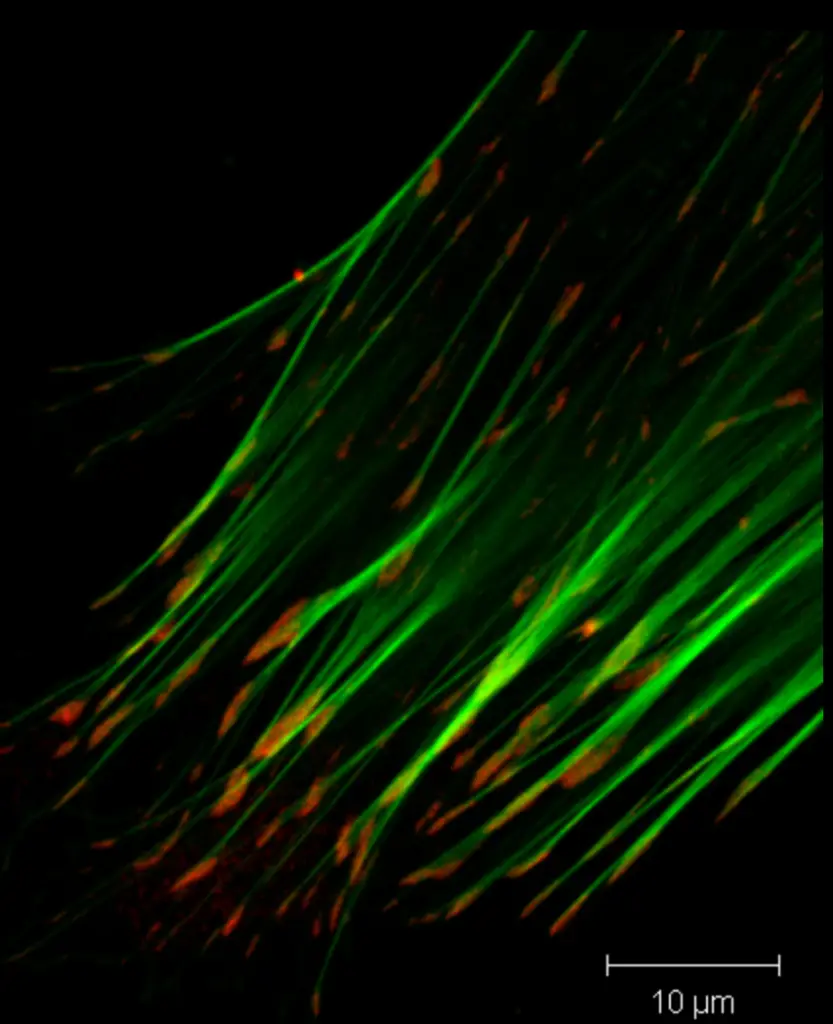
Function: Focal adhesions mediate cell adhesion to the ECM and play a role in cell migration, signaling, and tissue repair.
7. Plasmodesmata (in plant cells):
Structure: Plasmodesmata are channels that pass through the cell walls of adjacent plant cells, connecting their cytoplasms.
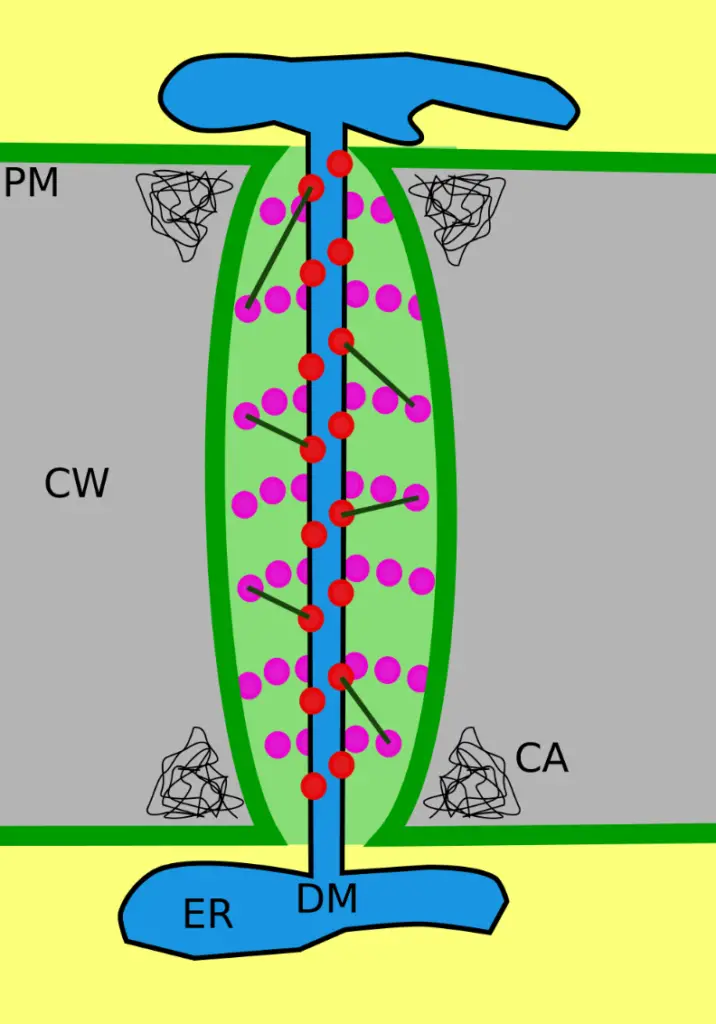
Function: Plasmodesmata facilitate the exchange of water, nutrients, and signaling molecules between plant cells. They play a crucial role in plant growth, development, and defense.
Cell junctions are essential for maintaining tissue integrity, regulating cell communication, and ensuring proper tissue function. Their diverse structures and functions enable multicellular organisms to coordinate activities, respond to environmental cues, and adapt to various physiological demands. The specific types of cell junctions in a tissue depend on its function and location within the body.

